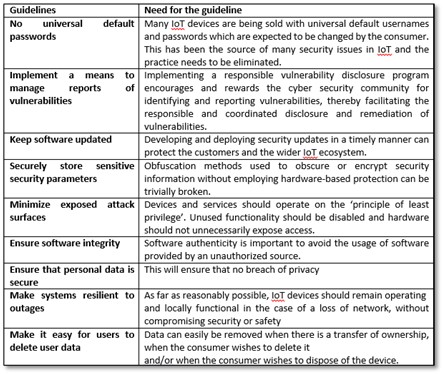Monday, 10th January 2022
Disposal of Waste Tyres
In News
Union Environment Ministry has recently released a new draft notification that proposes to regulate the disposal of waste rubber tyres by enforcing the Extended Producer Responsibility (EPR).
About the News
- Part of EPA: The rules are a part of the Environment (Protection) Act 1986 and will be effective from 2022-2023.
- Extended Responsibility of the Producers: This policy extends the responsibility of the producer, or importer, to include the disposal of waste tyres, and frees consumers from having to worry about responsible disposal.
- Extended Producer Responsibility (EPR) is a policy approach under which producers are given a significant responsibility – financial and/or physical – for the treatment or disposal of post-consumer products.
- The 2024 deadline: According to the notification, by 2024-2025, all manufacturers and importers of tyres, including waste tyres, will have to ensure that all their products are recycled in line with the government’s standards.
- They will have to recycle all their products, starting with recycling 35% and then 75% of their products for the first 2 years, and achieving 100% by 2024.
- There is a ban on the import of waste tyres for the sole purpose of producing pyrolysis oil or char.
- Mandatory Registration with CPCB: All producers and importers will have to register with the CPCB and obtain an ‘EPR certificate’ in favour of a registered recycler for all the products they recycle.
- Environmental Compensation: The CPCB has to formulate and set guidelines to impose and collect environmental compensation from producers and recyclers if they don’t comply with these regulations or use false EPR certificates.
India’s position on Rubber Consumption and Production
- Fourth Largest Producer in the world: India is the world’s third largest producer and fourth largest consumer of natural rubber.
- Automobile Industry- the largest consumer: Within the country, the automobile industry is the largest consumer (India produces 6.5 lakh tyres every day). Of the 1.5 billion+ waste tyres that are generated every year worldwide, 6% are in India.
- Large Import of Tyres: In addition, India also imports around 3 lakh tonnes of tyres to recycle every year. They are subject to thermochemical treatments in high temperature to produce industrial oil and other derivatives.
- Concerns related to Tyres: Pollution from these sources is a big concern as a number of pyrolysis units in about 19 states were observed to flout environmental norms and were responsible for high levels of pollution. The ill effects include:
- High concentration of BOD, COD, and Sulphur in the environment.
- Improper disposal of Waste.
- Inefficient Waste Treatment processes.
- Lack of Technology for disposal and treatment etc.
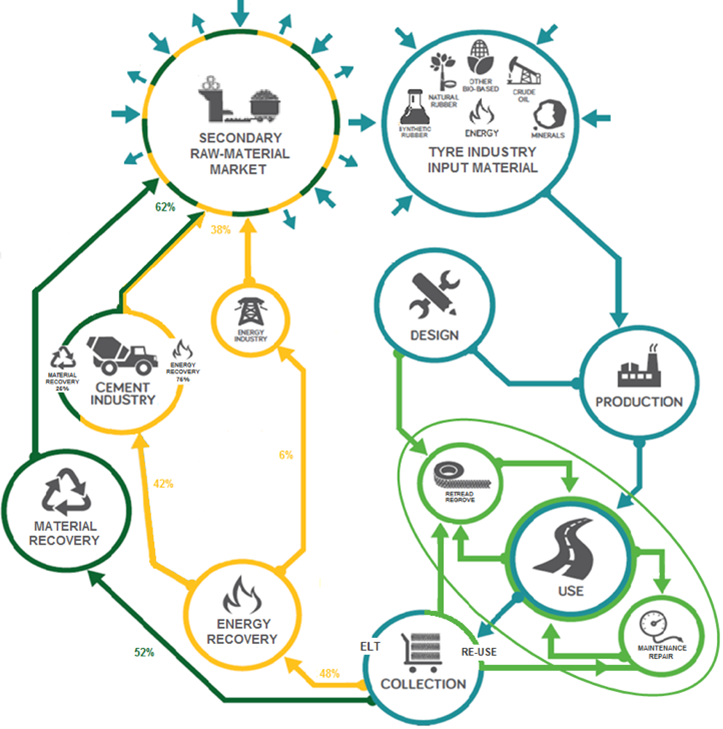
Source:
Image Source:
BIS completes 75 years
In News
On the 75th anniversary of establishment of the Bureau of Indian Standards (BIS), Union Food and Consumer Affairs Minister Piyush Goyal gave five growth mantras for BIS.
Five growth Mantra for BIS
- It should work as a facilitator not an obstructer.
- BIS should develop as a global organization by learning from global experiences and integrating global standards.
- BIS should work on gap analysis to assess laboratory attesting needs of the country and set up high quality modern labs across India.
- BIS should bring a quality or standard revolution through 'One Nation One Standard'
- BIS should ensure maintaining quality is not expensive and it is cost effective.
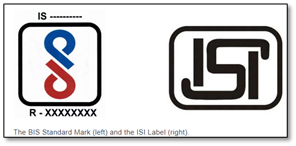
What is Bureau of Indian Standards (BIS)?
- An organization called the Indian Standards Institution (ISI) was set up on 6 January 1947 following a memorandum by the Department of Industries and Supplies to formulate National standards for industries.
- BIS replaced ISI, through an act of parliament in 1987, with a broadened scope and more powers taking over its staff, assets, liabilities and function.
- BIS through its core activities of standardization and conformity assessment, has been benefiting the national economy by
- providing safe, reliable and quality goods;
- minimizing health hazards to consumers;
- protecting the environment, promoting exports and imports substitute;
- controlling over proliferation of varieties etc.
- The Bureau is a Body Corporate consisting of 25 members representing both Central and State governments, Members of Parliament, industry, scientific and research institutions, consumer organizations and professional bodies.
- Union Minister of Consumer Affairs, Food and Public Distribution acts as its President and Minister of State for Consumer Affairs, Food and Public Distribution acts as its Vice-President.
- The various schemes of certification covered under BIS are:
- Product Certification Scheme – Applicable for tangible products
- System Certification Scheme – Applicable for systems/processes.
- Foreign Manufacturers Certification Scheme – Overseas applicants/foreign manufacturers are granted a license for the use of the ISI mark.
- Hallmarking – Applicable for articles made from precious metals like gold and silver.
- ECO Mark Scheme – Applicable for products affecting or related to the environment.
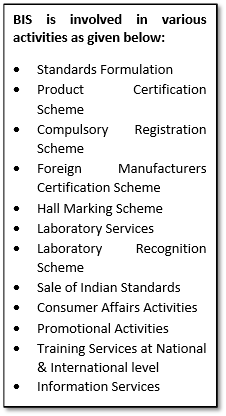
Other certification marks in India
- Agmark for all agricultural products.
- FPO mark for all processed fruit products in India.
- Geographical Indications marks, defined under the WTO Agreement on Trade-Related Aspects of Intellectual Property Rights (TRIPS)
- India Organic certification mark for organically farmed food products issued by testing centres accredited by the Agricultural and Processed Food Products Export Development Authority (APEDA) under the National Program for Organic Production of the Government of India.
- ISI mark for industrial product.
- Non-Polluting Vehicle mark on motor vehicles certifying conformity to the Bharat Stage emission standards.
- FSSAI for all food products.
Sources:
Revised universal accessibility guidelines
In News
Recently, the Central Public Works Department (CPWD), Ministry of Housing and Urban Affairs (MoHUA), released the Harmonised Guidelines and Standards for Universal Accessibility in India 2021.
About the News
- It has been drafted by National Institute of Urban Affairs of the MoHUA in collaboration with IIT Roorkee by taking various aspects of the built environment into consideration.
- The guidelines are a revision of the Central Public Works Department (CPWD) mandate for Barrier-Free Built Environment for Persons with Disabilities and Elderly Persons.
What are the important features of the guidelines?
- Accessibility, diversity and Universal design: The design of products and environments to be usable by all people, to the greatest extent possible, without the need for adaptation or specialized design.
- External and internal elements: The external features of buildings such as parking, walkways, ramps are required to be planned with coherence and understanding in enhancing accessibility to all.
- Information and wayfinding: Every built environment, be it transportation based, education, healthcare or recreational requires to develop their contextual information system designs to ensure access for all including persons with visual, hearing or cognitive impairments.
- Building typologies: An integrated approach of combining information with built infrastructure and human involvement to make a seamless experience possible for people with diverse abilities, age or gender and participate equally in various activities and functions of life.
- Operations and maintenance: Enforcing a universal design approach with standard format for technology, manpower training and capacity building along with constructive reforms in transforming the accessibility culture of our built environments.
- Evaluating accessibility: All built environments should require to get themselves assessed and evaluated for accessibility in three broad domains viz. Information Systems, Infrastructure systems and Building Management Systems.
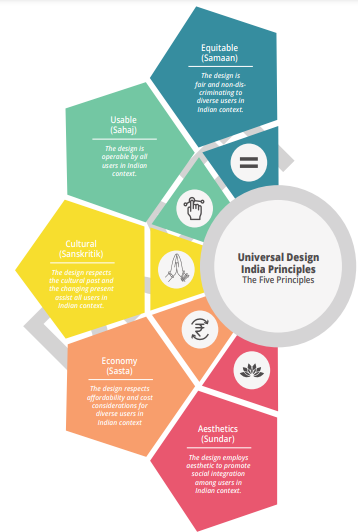
What are the major Challenges to Accessibility in India?
- Lack of dedicated guidelines to develop, promulgate and monitor the implementation of minimum standards and guidelines for the accessibility of facilities and services to the public.
- Poor accountability of private entities in offering all aspects of accessibility for persons with disabilities in their facilities and services to public.
- Lack of training for stakeholders on accessibility issues facing persons with disabilities.
- Very few buildings and other facilities open to the public provide signage in Braille and other support forms.
- Absence of sufficient forms of live assistance and intermediaries, including guidelines, readers and professional sign language interpreters.
- Lack of other appropriate forms of assistance and support to persons with disabilities to ensure their access to information
- Very few avenues to promote access for persons with disabilities to new information and communications technologies and systems, including the Internet.
“The problem is not how to wipe out all differences, but how to unite with all differences intact” - Rabindranath Tagore
Sources:
Wildemar Modecai Haffkine
On 10 January 1897, famous scientist Wildemar Modecai Haffkine, inoculated himself with a vaccine against Plague publicly, to demonstrate the harmlessness of the product in Bombay. Russian-French scientist and bacteriologist, Wildemar Haffkine worked at the Pasteur Institute in Paris, where he developed a cholera vaccine. Later he moved to India, where he set up a laboratory at Byculla, Mumbai in 1896, later called the Haffkine Institute, and introduced the cholera vaccine in India. In October 1896, an epidemic of bubonic plague struck Bombay and with Haffkine’s help a vaccine was developed. A form for human trials was ready and on 10 January 1897 and Haffkine tested it on himself. Haffkine's vaccine used a small amount of the bacteria to produce an immune reaction. This method for vaccine development is still being used. Lord Joseph Lister named Haffkine, "a saviour of humanity" for his contributions to medicine.

Source:
Crowd Disasters and Management
In News
Recently, a stampede occurred at the Mata Vaishno Devi shrine in Jammu and Kashmir.
About the News
- At least 12 people died and over a dozen were injured in a stampede at the Vaishno Devi shrine triggered by a heavy rush of devotees on the New Year.
- Deadly stampedes are common at India’s vast pilgrimages and religious festivals. They are often brought on by overcrowding and an absence of adequate safety measures.
- Religious festivals, especially when located at remote rural areas and on hilly terrains, and on the foothills or at river banks lacking proper pathways always pose a geographic risk to pilgrims.
- Crowd disasters or stampedes are also frequent at other gatherings like political rallies, railway stations, big entertainment events etc
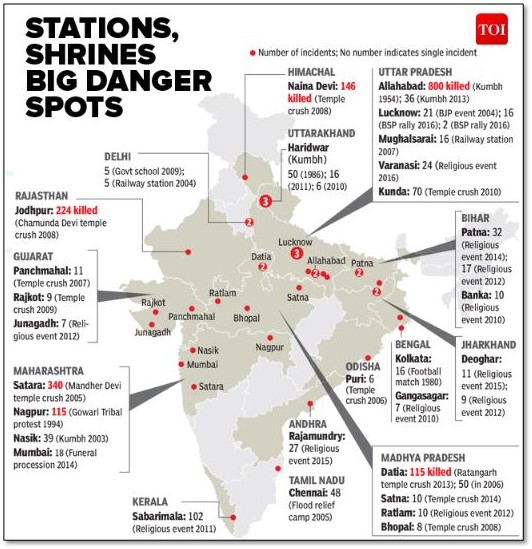
Understanding the Crowd Dynamics. What triggers a Crowd Disaster/stampede?
- What are Stampedes?: Stampedes or crowd crushes usually start in places that are crammed beyond capacity with people (10 people per sqm or more). Stampedes can be classified into two categories—unidirectional and turbulent.
- Forces at play in Stampede: A ‘positive change in force’, such as a blockade, that stops the crowd or a ‘negative change in force,’ such as the opening up of a gate, that suddenly releases the accumulated crowds, can cause a unidirectional stampede.
- Crowd Dynamics: When the crowd density is high, physical interaction between people causes a chain reaction. At such high densities, force travels from one body to another at a rapid pace. The crowd itself, acting like a fluid, becomes a force so powerful that even large numbers of police personnel find themselves inundated, and incapable of managing the situation.
- Crowd behaviours: Crowd behaviours are inherently pathological and abnormal, and the mere existence of a crowd can cause civilized consciousness to vanish. Individuals, when they become one with a crowd, lose all sense of self and responsibility.
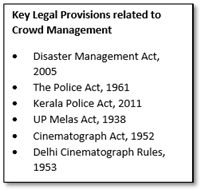
Reasons that lead to Crowd Disasters
- Structural Causes: Structural collapse of barricades/ railing or fences, or barriers on the way, difficult terrain, Narrow Exits, unauthorized constructions etc.
- Fire/ Electricity: Factors like violation of fire code and unauthorized fireworks lead to fire incidents in makeshift structures which are may get out of control due to lack of fire extinguishers or fire escapes. Such sudden fire events and power failures lead to panic and hence stampedes.
- Overcrowding beyond capacity: More than anticipated crowd at malls/ political rallies/ religious gatherings, along with lack of effective crowd handling capacity like segregation, entries or exits.
- Crowd Behaviour: Unruly and irresponsible crowd behaviour due to factors like sudden entry or exits, distribution of disaster relief supplies, mass evacuation or reversal in direction of pathways cause panics and stampedes.
- Inadequate Security: Under-deployment of security personnel to regulate to control the crowd, inadequate briefing of security personnel on crowd control, lack of proper public announcement systems, lack of CCTV cameras etc.
- Lack of Co-ordination between Management agencies: Co-ordination gap between agencies like Police, Fire Service, Medical staff etc. leads to communication delays, fund shortage and delayed decision making in situations of crowd disasters.
What is Crowd Management and how can it be implemented?
Crowd management is defined as the systematic planning for, and supervision of, the orderly movement and assembly of people. Crowd management involves the assessment of the people handling capabilities of a space prior to use. It includes evaluation of projected levels of occupancy, adequacy of means of ingress and egress, processing procedures such as ticket collection, and expected types of activities and group behavior.
Measures for Crowd Management
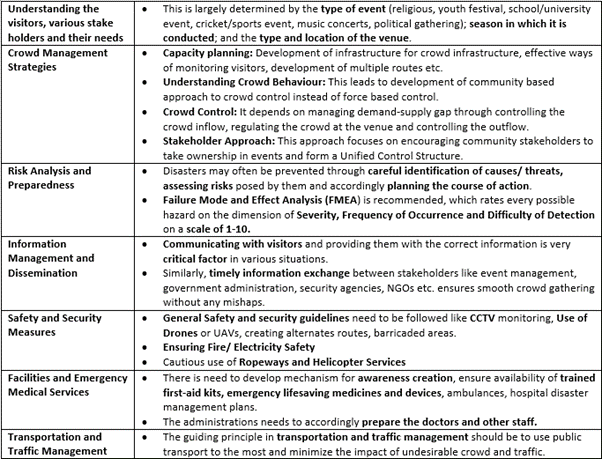
Conclusion: Crowd management is important to build a participatory approach with the active involvement of various stakeholders, local representatives, and the community to ensure smooth conduct of events of mass gathering. Crowd management can vary as per the location, type, and situation. Preparing crowd management plan should be an exercise which includes the issues, challenges, venues and event of mass gathering. The plan should focus on religious place with the help of the local authorities and stakeholders.
Question: The factors causing a stampede are not only influenced by the physical factors, but also psychological factors. Elaborate.
Source:
- Vaishno Devi stampede: What led to the mishap? Here's what we know so far
- Why do deadly stampedes occur during Indian religious festivals?
- Why places of worship in India are vulnerable to stampedes
- CROWD MANAGEMENT
- Managing crowds at Events and Venues of Mass Gathering
- The changing nature of crowds and their management in Indian metros
- Anatomy of a stampede
Supernova
This is image of a red star that went Supernova. In a first for astronomy, researchers were able to see in real time the death by explosion of a giant red star using ground-based telescopes. Using a telescope in Hawaii, a team of scientists managed to observe a red giant star just as it "went supernova," as exploding stars are called. It is a breakthrough in the understanding of what massive stars do moments before they die. The star that exploded was a red supergiant that contained about 10 times the mass of the sun and was located about 120 million light-years from Earth. The star was located in the outer reaches of the galaxy NGC 5731. Observations of the region around the red giant including the concluding supernova, was combined from a host of telescopes starting from January 2020 for over a year. Taken together with some archival observations, all that information gave the scientists a sense of what the neighbourhood is like, how the star was behaving in its final days and how the supernova itself unfolded.

Sources:
Cheetah Reintroduction - Edukemy Current Affairs
- Context: Kuno National Park has prepared itself for immediate reintroduction of Cheetah.
- The Asiatic Cheetah (Acinonyx jubatus venaticus) is a critically endangered subspecies of Cheetah (globally listed as Vulnerable in the IUCN Red List and Appendix 1 of CITES) that historically inhabited the regions of North Africa to Central India.
- It is a big cat and the fastest land animal that became extinct in India in 1952 and can be currently found only in the deserts of Iran.
- They are prone to threats such as excessive hunting, habitat degradation and scarcity of prey species that were hunted to near extinction by man.
- Recently, the government has launched an action plan under which 50 of these big cats will be introduced in the next five years.
- The cheetah for reintroduction shall be imported from Namibia or South Africa and their translocation will be in Kuno Palpur National Park, located in Chambal Valley, Madhya Pradesh.
- It houses all four wild cats- Lions, Tiger, Leopard and now reintroduced Cheetah.
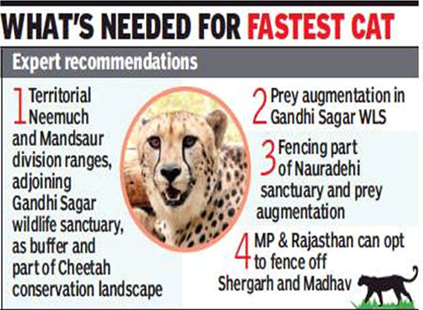
Sources:
- 50 Cheetahs to be introduced in India in next 5 years: Environment Minister
- Asiatic Cheetah
- Kuno Palpur National Park
Image Source:
Oriental Darters
- Context: In order to monitor seasonal fluctuations in birds' movements, the ringing of oriental darters has been taken up in Bharatpur bird sanctuary (Keoladeo National Park).
- The ringing of darters with colourful bands helps in ascertaining their habit of reporting back at the nests used earlier by them. This is done using GPS that will have no ecological consequence on its habitat.
- The Oriental darter or Indian darter (Anhinga melanogaster) is a water bird of tropical South Asia and Southeast Asia.
- It is characterized by a long and slender neck with a straight pointed bill, and it hunts for fish with its body submerged is in water.
- They are classified as “near-threatened” by the International Union for Conservation of Nature (IUCN).
- Keoladeo National Park is a UNESCO World Heritage and a Ramsar Site located in Bharatpur district of Rajasthan. The National park is famous for its Siberian crane and is a habitat for nearly 365 species of birds, raptors and waterfowls.

Sources:
Image Source:
One District One Product - Edukemy Current Affairs
- Context: Union Minister for Ministry of Food Processing Industries has launched six, One District One Product (ODOP) brands under the Pradhan Mantri Formalisation of Micro food processing Enterprises (PMFME) Scheme.
- The six brands include:
- The brand Amrit Phal for amla juice from Gurugram, Haryana; (2) Cori Gold brand from coriander powder for Kota, Rajasthan; (3) Brand Kashmiri Mantra for spices from Kulgam, Jammu and Kashmir; (4) Brand Madhu Mantra for honey from Saharanpur, Uttar Pradesh; (5) brand Dilli Bakes for whole wheat cookies, Delhi and (6) Brand Somdana (from Ragi flour) from Thane, Maharashtra.
- PMFME scheme is a centrally sponsored scheme that was launched under the Aatmanirbhar Bharat Abhiyan in 2020.
- It aims to provide financial, technical and business support for upgradation/setiing up 2 lakh micro food processing units based on the ODOP approach in a period of 5 years (2020-2025).
- ODOP is an initiative that enhances the realization of the true potential of a district, fuel its economic growth, generate employment and rural entrepreneurship.
- It is operationally merged with ‘Districts as Export Hub’ initiative of Director General of Foreign Trade (DGFT), Department of Commerce, with Department for Promotion of Industry and Internal Trade (DPIIT) as a major stakeholder.
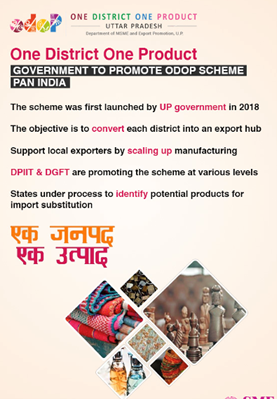
Sources:
- Food processing minister launches 6 brands under One District-One Product
- Food processing minister launches 6 brands under One District-One Product
Image Source:
First Open Rock Museum
- Context: Union Minister of State for Science & Technology has inaugurated the first open rock museum in Hyderabad.
- Based on varied geological history, the Geological Survey of India has classified rock systems of India country into 4 major divisions: Achaean Rock System, Dravidian Rock System, Purana Rock System, and Aryan Rock System.
- The rocks have been sourced from Odisha, Tamil Nadu, Uttarakhand, Jharkhand, Jammu & Kashmir and others with depth of 175km from earth surface with ages ranging from 3.3 Billion years to around 55 Million years of the Earth’s history.
- This initiative will help to study the geological pattern of a country, types and character of rocks and slopes, the physical and chemical properties of soils, the availability of minerals, and the surface and underground water resources.
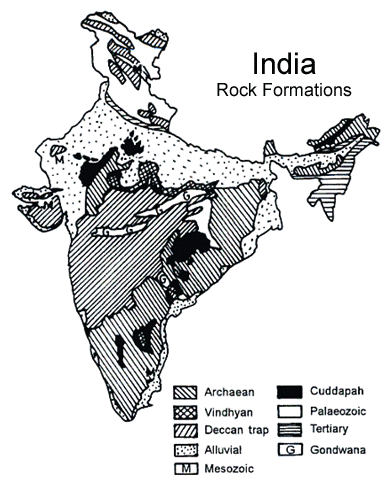
Sources:
Image Source:
Solving migrant workers’ housing crisis: IE
Essence: Shelter is a basic human need. The 2011 Census of India indicates that there are around 4.5 lakh houseless families out of the urban population. The condition becomes deplorable for migrant workers in urban area who have to live in unhygienic and poorly ventilated places. Pandemic too affected the housing of migrant workers. While most of them had to return to their hometowns on foot, the remaining population had to face the problem of rent. The problem of dignified housing is aggravated by lack of WASH facilities. All these issues demand for a long-term policy making in the housing sector.
The Government has tried to address the above issue for urban poor and especially migrants through various policies and programs like the Smart Cities Mission, AMRUT, Atmanirbhar Bharat etc. The article calls for more action-oriented policies in favour of migrant labour.
Why to read this article?
- To understand why housing crisis is a big issue especially for the migrant labours living in the urban areas. Also, to realize how pandemic aggravated the issue of housing for migrant labours.
- This article highlights a few important steps taken by the Government for urban poor and especially the migrants (GS II). It also suggests a few steps which can make the lives of migrant labour better.
Source:
The threat of India’s two-and-a-half front war: HT
Essence: The editorial talks about the security situation in India and our engagement in 2 and a half front war- Pakistan, China and half front being the internal conflict. The editorial says that any war has a beginning, process and end but the magnitude of resources and strategy spent in warfare is well more and extended than the period or direct spending on the war.
In this regard, India faces issues with respect to Pakistan with comparably lesser resources, Pakistan has engaged Indian armed forces in long drawn conflicts along the border and limited terror strikes. With regards to China, India seems to have had a economic, technological and trade deficit, and yet faces China as threat along Tibet.
The internal disturbance, considered as half front, relates to the issue of naxalism, factionism, etc. and has cost resources, personnel, peace, progress of various pockets of India. The editorial points that this half front is the one that is bound to draw and drain more resources, and needs to be handled with pragmatism.
Why you should read this article?
- To understand India’s limitations in war with Pakistan and China.
- To understand the issues around the internal conflict happening within our country.
Source:
A constitution with climate change as a central theme
Background
- Chile is writing a new constitution that will have climate and ecology play a central theme.
- Chile is home to over half of the world's lithium reserves.
- Chile’s very economic model, based on extraction of natural resources, has exacted too high an environmental cost and failed to spread the benefits to all citizens, including its Indigenous people.
Environment emergency as a factor for Change in Constitution
- After months of protests over social and environmental grievances, 155 Chileans have been elected to write a new constitution amid what they have declared a “climate and ecological emergency.”
- Constitutional Convention members will decide many things, including: How should mining be regulated, and what voice should local communities have over mining? Should Chile retain a presidential system? Should nature have rights? How about future generations?
- Their work will not only shape how this country is governed. It will also determine the future of a soft, lustrous metal, lithium, lurking in the salt waters beneath this vast ethereal desert beside the Andes Mountains
- Indeed, the questions facing this Convention are not Chile’s alone. The world faces the same reckoning as it confronts climate change and biodiversity loss amid widening social inequities.
Quote: “Progress without change is impossible and those who cannot change their minds cannot change anything”
-George Bernard Shaw
Source:
Share the article
Get Latest Updates on Offers, Event dates, and free Mentorship sessions.

Get in touch with our Expert Academic Counsellors 👋
FAQs
UPSC Daily Current Affairs focuses on learning current events on a daily basis. An aspirant needs to study regular and updated information about current events, news, and relevant topics that are important for UPSC aspirants. It covers national and international affairs, government policies, socio-economic issues, science and technology advancements, and more.
UPSC Daily Current Affairs provides aspirants with a concise and comprehensive overview of the latest happenings and developments across various fields. It helps aspirants stay updated with current affairs and provides them with valuable insights and analysis, which are essential for answering questions in the UPSC examinations. It enhances their knowledge, analytical skills, and ability to connect current affairs with the UPSC syllabus.
UPSC Daily Current Affairs covers a wide range of topics, including politics, economics, science and technology, environment, social issues, governance, international relations, and more. It offers news summaries, in-depth analyses, editorials, opinion pieces, and relevant study materials. It also provides practice questions and quizzes to help aspirants test their understanding of current affairs.
Edukemy's UPSC Daily Current Affairs can be accessed through:
- UPSC Daily Current Affairs can be accessed through Current Affairs tab at the top of the Main Page of Edukemy.
- Edukemy Mobile app: The Daily Current Affairs can also be access through Edukemy Mobile App.
- Social media: Follow Edukemy’s official social media accounts or pages that provide UPSC Daily Current Affairs updates, including Facebook, Twitter, or Telegram channels.

